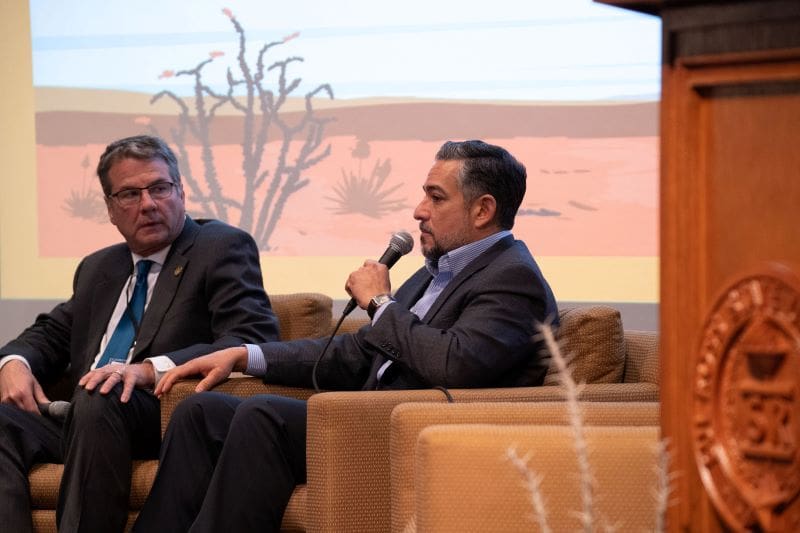Alpine, TX – After a successful Water in the Desert conference in January, Sul Ross State University officials are working to enhance the university’s influence regarding water issues in West Texas. The conference, which was the first of its kind in the region, brought together over 260 attendees, including members of the Texas House and Senate, local groundwater conservation district leaders, scientists and Texas landowners. It was hosted on campus on January 18, 2024.
“Our university, in the Chihuahuan Desert, in the Big Bend, is perhaps the most appropriate location for teachers and researchers, legislators and landowners, conservationists and innovators, to meet and share information and ideas,” said Sul Ross State University President Carlos Hernandez. “We were pleased to see the immense interest in this important topic, and we hope this will be the first of many years of partnership with the Water in the Desert conference.”
The conference was funded by organizations from across the state, including the Dixon Water Foundation, Environmental Defense Fund, Horizon Foundation, King Land & Water, Lyda Hill Philanthropies, Shield Ranch, Still Water Foundation, and Texas Wellspring Fund. Several organizing partners also played a role in the conference, including Borderlands Research Institute, Rio Grande Research Center, Rio Grande Joint Venture, and Texas Parks and Wildlife.
The gathering featured panels on groundwater management, public and private land stewardship and water policy at the Texas Legislature. In that session, Sen. Charles Perry, chair of the Senate Committee on Water, Agriculture and Rural Affairs; Rep. Tracy King, chair of the House Natural Resources Committee; and Sen. César Blanco took a deep dive into the intricacies of state water policy.
In the most recent legislative session in 2023, lawmakers created the Texas Water Caucus, a new legislative group dedicated to water policy, and they also approved the creation of a $1 billion Texas Water Fund to finance water projects in Texas, subject to approval by voters. In November 2023, the bill was approved by 77% of voters. The new fund is earmarked—75% for funding aging infrastructure and 25% for developing new sources of water such as desalination plants associated with oil fields in West Texas. During the panel discussion, state leaders noted the $1 billion investment will just begin to address the water needs in Texas. “Water’s not sexy. It’s long term and it’s expensive,” noted Senator Perry.
University officials hope to build on the interest generated by the conference going forward.
“Sul Ross State University is uniquely positioned to become a research hub and an area-wide water resource for the greater Big Bend region,” said Dr. Louis Harveson, who is founder and director of the Borderlands Research Institute and Associate Provost of Research and Development at Sul Ross State University. “The Water in the Desert conference has injected new energy and interest in enhancing university resources devoted to this critical issue. As drought deepens, cities spread, and pumping increases, the pressure on this most precious desert resource will only grow.”
Since 2007, the Borderlands Research Institute has encouraged effective land stewardship of the Chihuahuan Desert. Housed at Sul Ross State University, the Borderlands Research Institute builds on a long-lasting partnership with private landowners, the university’s natural resource program, cooperating state, federal, and non-governmental organizations, and other stakeholders. Through research, education and outreach, the Borderlands Research Institute is helping to conserve the last frontier of Texas and the Southwest.
Headline image: Texas Senator Charles Perry & Texas Senator Cesar Blanco
Photo credit: Scott Delvecchio






